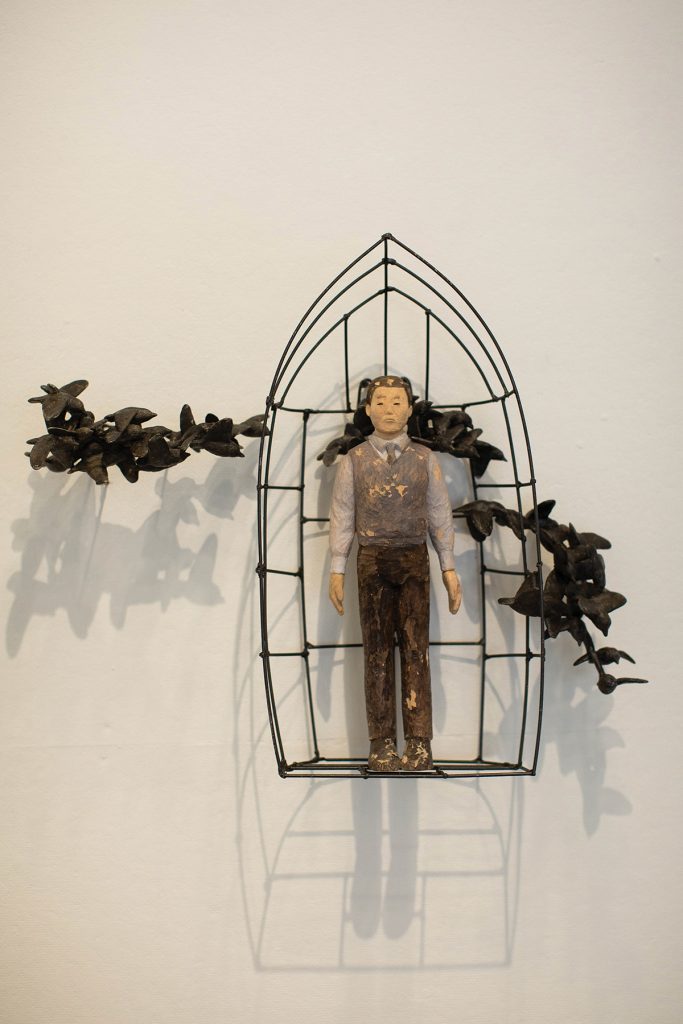
Tracey Morgan spent her early career working in prestigious galleries before bringing her own vision to Asheville.
Photo by Colby Rabon
As a teen, Tracey Norman-Morgan didn’t keep pictures of rock stars or heartthrobs taped to her wall. Instead, she put up photos of fashion designers, artists, and gallery owners — her “heroes,” she says. Morgan started out as a painting major at Florida State University, but changed to art history her junior year.
“Learning about the American Modern artists made a big impact on me,” she says. Morgan was especially intrigued by the example of Alfred Stieglitz, whose 291 art gallery, which operated at 291 Fifth Avenue in Manhattan in the first decades of the 20th century, elevated art photography to the same plane as painting and sculpture.

Photo by Colby Rabon
After college, Morgan interned at the Smithsonian Institution’s Archives of American Art in Washington, DC, where she researched the diaries of American artists and wrote a brief synopsis of each for the gallery’s catalogs: “I spent my days in a research library and on microfilm.”
At the conclusion of her internship, she landed a position as a curatorial associate at now-closed Eaton Fine Art in West Palm Beach — “an amazing first job.” She worked for 20 years in various gallery settings before deciding to branch out on her own, leaving New York City with her husband in 2015 and heading to Asheville, where, she says, “part of our motivation was to open our own businesses.” On January 17, 2017, she debuted Tracey Morgan Gallery at 188 Coxe Avenue.
While not an artist herself, Morgan nourishes her creative spirit through curating. “I love the act of the exhibition layout and trying to solve what works well with other pieces or other artists,” she says.

Photo by Colby Rabon
About 30 artists are represented in the 2,400 square feet of Tracey Morgan Gallery. “I opened the gallery with the intent of showing artists I’d worked with in the past or ones I’ve admired during my career,” she notes. However, soon after the gallery opened, she realized the wealth of talent close to home: “I’ve broadened my programming a bit over the last few years and [now] try to keep a balance of national, regional, and local artists.” Among the Western North Carolinians she represents are fiber artist Rachel Meginnes, painter Margaret Curtis, and photographer Colby Caldwell.
But she adds that “any artist we add has to fit in with the rest of the roster … meld[ing] with my sensibility and eye. I could never show or sell a work of art that I myself wouldn’t own. … I tend to gravitate toward work that is unique and also a bit challenging, in technique and content. I don’t show very much decorative work, although I recognize the need for it.”

Photo by Colby Rabon
Morgan says she tries to strike a balance in showing emerging or younger artists, those in mid-career, and museum-collected veteran makers. Mediums include photography, painting and other works on paper, sculpture, and video.
A collective, boundary-blurring approach is becoming more common in galleries, but Morgan adheres to a formalist layout — the traditional “white cube” model that focuses on one or two artists at a time. “I like giving an artist a chance to exhibit an entire body of work with enough space around each piece, which allows the work to breathe and stand out,” she explains. Her occasional group shows are tightly curated around a theme.

Photo by Colby Rabon
In 2019, the gallery and photographer Stacy Kranitz were shortlisted for the Louis Roederer Discovery Award, part of The Rencontre d’Arles Photography Festival, for an exhibit they installed in Arles, France.
“While we didn’t win, it was an honor to have been included — and to see an exhibition of an artist that we represent installed internationally.”

Tracey Morgan Gallery, 188 Coxe Ave. on Asheville’s South Slope. Gallery hours are Tuesday through Saturday, 11am-5pm. The gallery will feature Luke Whitlach’s exhibit Do You Call Day, Night? through Saturday, Feb. 20. Future exhibits will include works by Tema Stauffer, Gesche Würfel, and Anastasia Samoylova. For more information, call 828-505-7667 or visit traceymorgangallery.com.